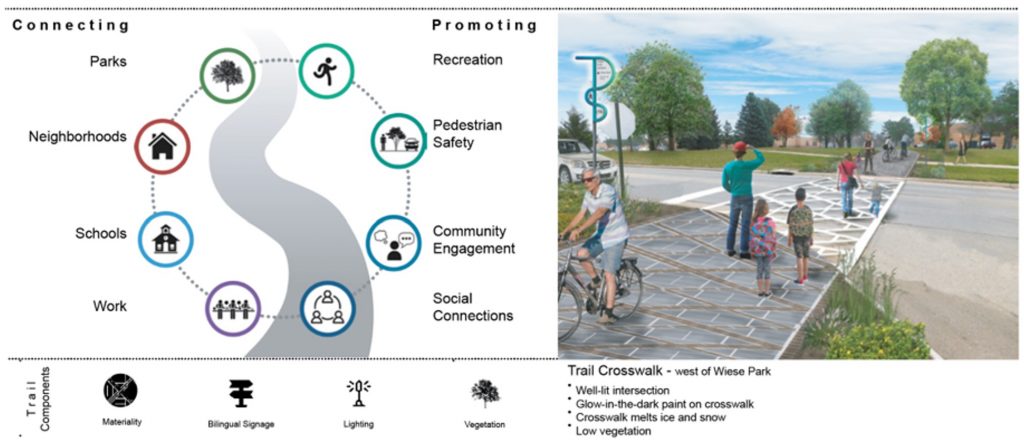Hollygrove is a passionate neighborhood with exciting opportunities for growth and dedication for the youth. The goal of this video is to showcase certain overarching ideas that could be utilized throughout Hollygrove to create safer and resilient spaces for children. The video hits on the ideas of restoring nature within vacant lots, encouraging car owners to park at new pocket parking lots, in turn opening up the circulation system that is the streets, and opening up the green slice that runs through the heart of Hollygrove with the opportunities of creating a triangle of land connecting Larry Gilbert Stadium, Lafayette Academy, and the Green Strip and becoming a safe haven for the movement of all.
Story Starters Workshop
Create Your Own Story:
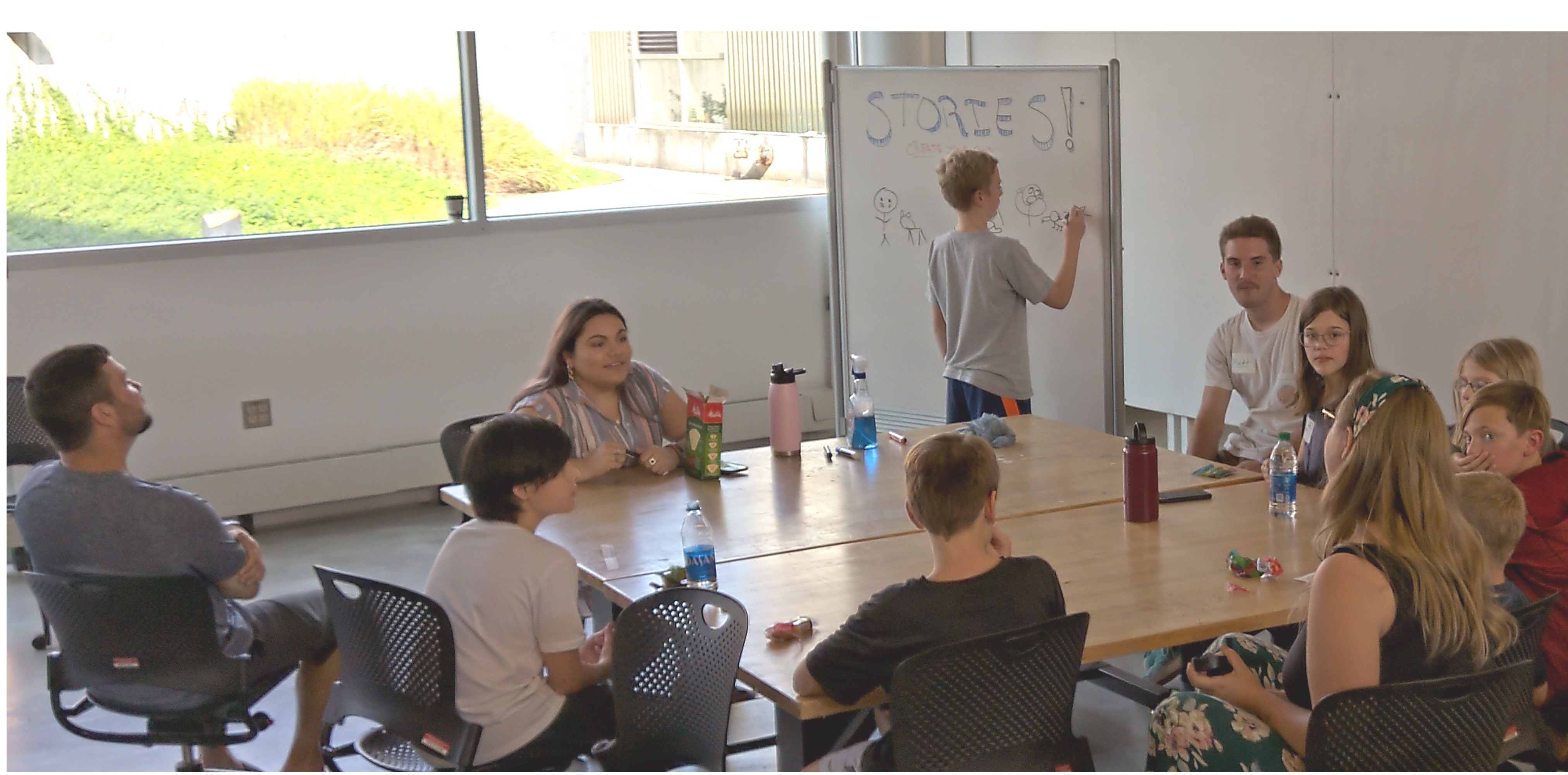 Our studio had the awesome opportunity to work with some local rockstars from Ames, IA. There were four different workshops going on: Drawing a City, Mental Mapping, Build Your Dream City, and Story Starters. In our group, we got the chance to listen to the students develop their stories based upon different prompts. The prompts were either fantastical like, “I was flying a kite when suddenly a gust of wind came and __________” or more structured ones like, “I was walking to ________ to get __________”.
Our studio had the awesome opportunity to work with some local rockstars from Ames, IA. There were four different workshops going on: Drawing a City, Mental Mapping, Build Your Dream City, and Story Starters. In our group, we got the chance to listen to the students develop their stories based upon different prompts. The prompts were either fantastical like, “I was flying a kite when suddenly a gust of wind came and __________” or more structured ones like, “I was walking to ________ to get __________”.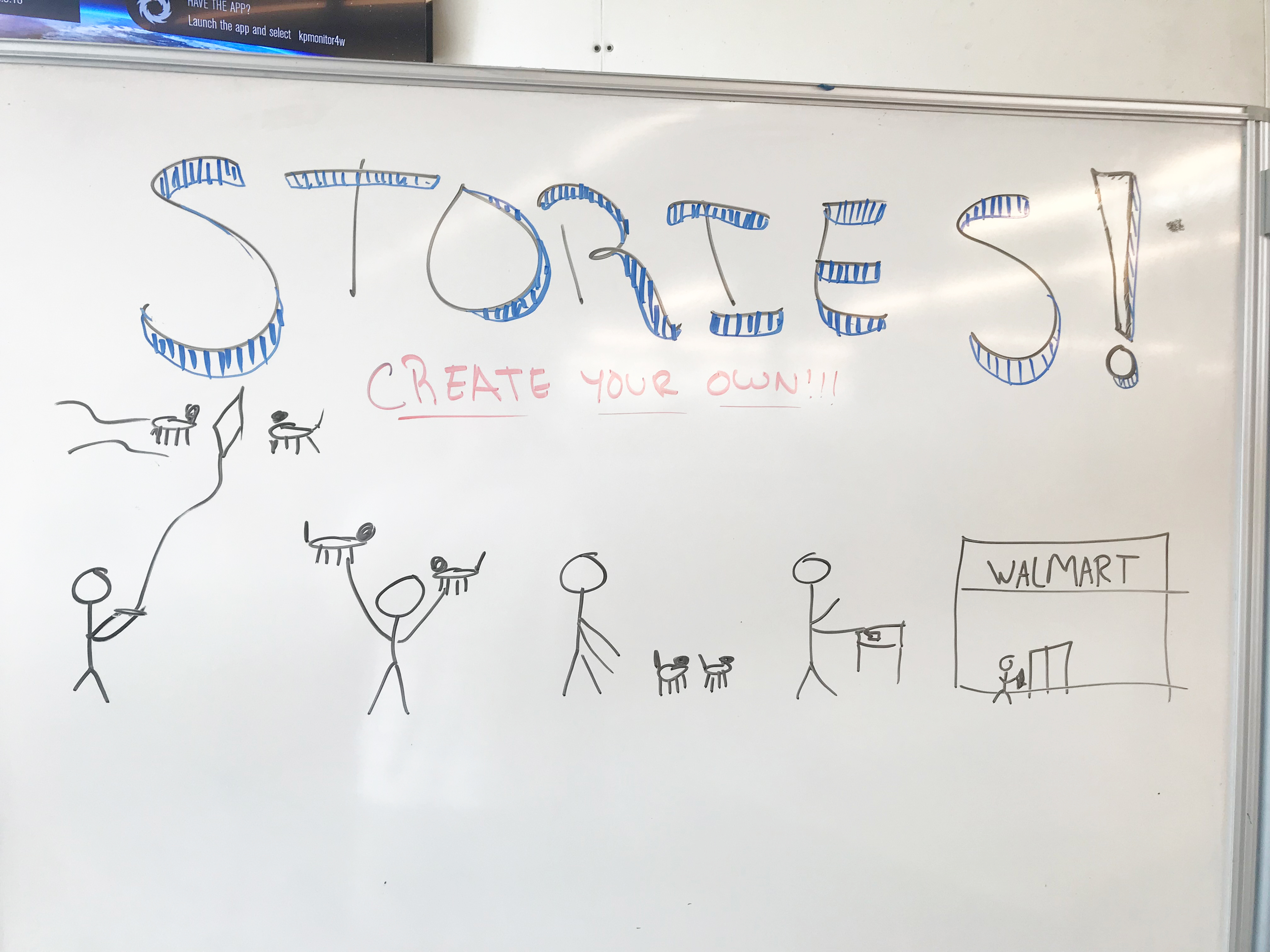
The point of the prompts was to hear what creative ideas were floating around in these 6th-8th graders’ heads, and to channel their every day experiences to better understand how they are viewing the world. Honestly, their worlds are pretty extraordinary. Though sometimes filled with random explosions, our group also took their dogs to the park, made pigs fly, and solved world hunger with fish sticks. Though the logistics remain unclear for the execution of most of their ideas, the themes of exciting surprises, care for the world, and spontaneous combustion rang through.
Drawing a City
What is a city? Some may think of it as a concrete jungle but when we asked children from Ames Middle School, we got some unique answers during discussion.
An obvious answer is that a city is simply a big town. But another thing to consider and ask ourselves is what makes city successful? What type city would you want to live in?
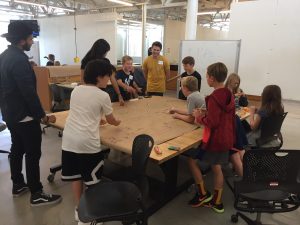
Before designing the “perfect” city, we asked the kids to think about what some of their favorite things about cities are.
Here’s what we got:
“What are your favorite things to do in Ames?”
“Going to my friend’s house after school and playing video games.”
“Going to the park”
What is your favorite city that you’ve been to and why?
“Singapore because it’s cool.”
“Denver because of 16th street”
What do you want to be when you grow up?
“A baseball player.”
“A rich engineer.”
What is important for a city to have?
“Running water.”
“A restaurant.”
“An airport so people can get here.”
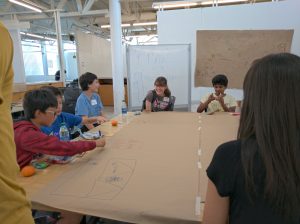
After discussion, we asked all the kids to work together to create a dream city of their own.
Draw a place that you would want to go to. What’s the weather like? Is it a big city or a small city?
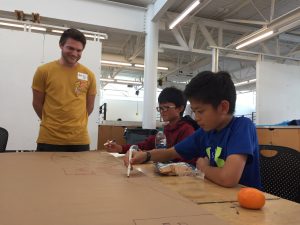

During the process, we asked them what they included what they did onto their drawings and what other elements would be important to include. We found that there was a pattern in both of the two groups that did this workshop exercise. They all started with buildings and structures, then included roads to connect them. Then with our help, they decided that it was also important to add other things such as schools, malls, parks, and bodies of water such as lakes and rivers. Lastly, some even went as far as to create landmarks, flags, and names for the city. Images attached below are the results of this exercise.
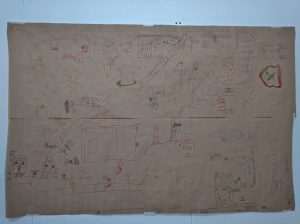
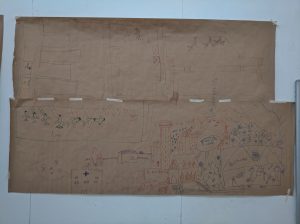
Thank you to the kids of Ames Middle School for their help in our design process.
-Sharissa, Sandeep, and Austin
Who Are We?
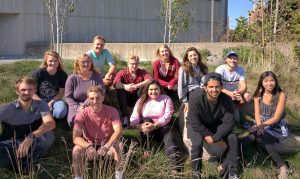
We are a group of Landscape Architecture students studying at Iowa State University. Why would Landscape Architecture students build this super cool website you ask? Well, the answer is simple: we care! As a field, Landscape Architecture is all about helping improve the lives and functions of people, spaces, and cities. Right now, our studio focus is on how we can make New Orleans a child-friendly city. This website is a tool and community meant for you. We’ve linked Resources, News & Events, and Initiatives here for you to explore and enjoy.
More About LA
What is Landscape Architecture? If you were to look it up in the dictionary, it would give you this definition: “the art and practice of designing the outdoor environment, especially designing parks or gardens together with buildings and roads”. The reality of Landscape Architecture is that its practice can be applied to many fields. This project utilizes large scale planning of urban design to create healthy and long-lasting changes to the fabric of New Orleans.
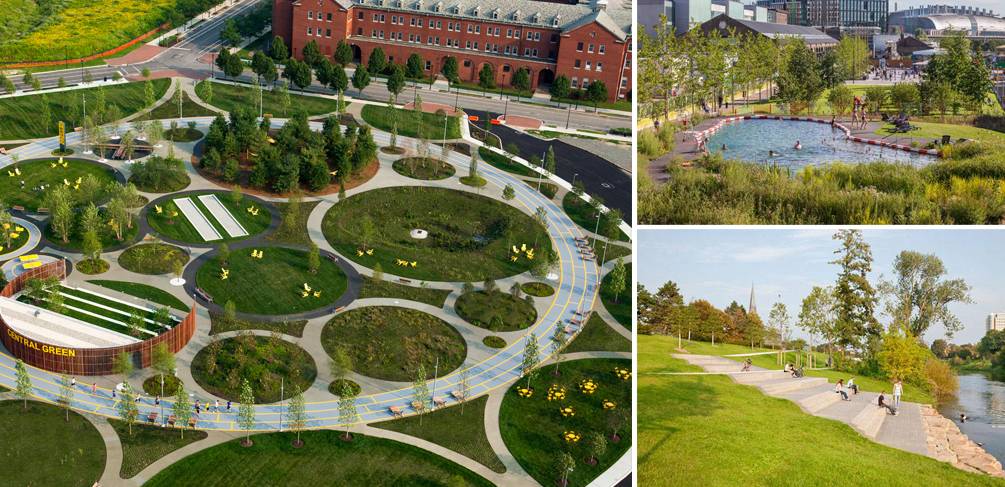
https://land8.com/top-10-landscape-architecture-projects-2015/
Our Studio
SEMESTER THEME: Child-Friendly New Orleans: Youth Inclusion, Resilience, and Climate Change”
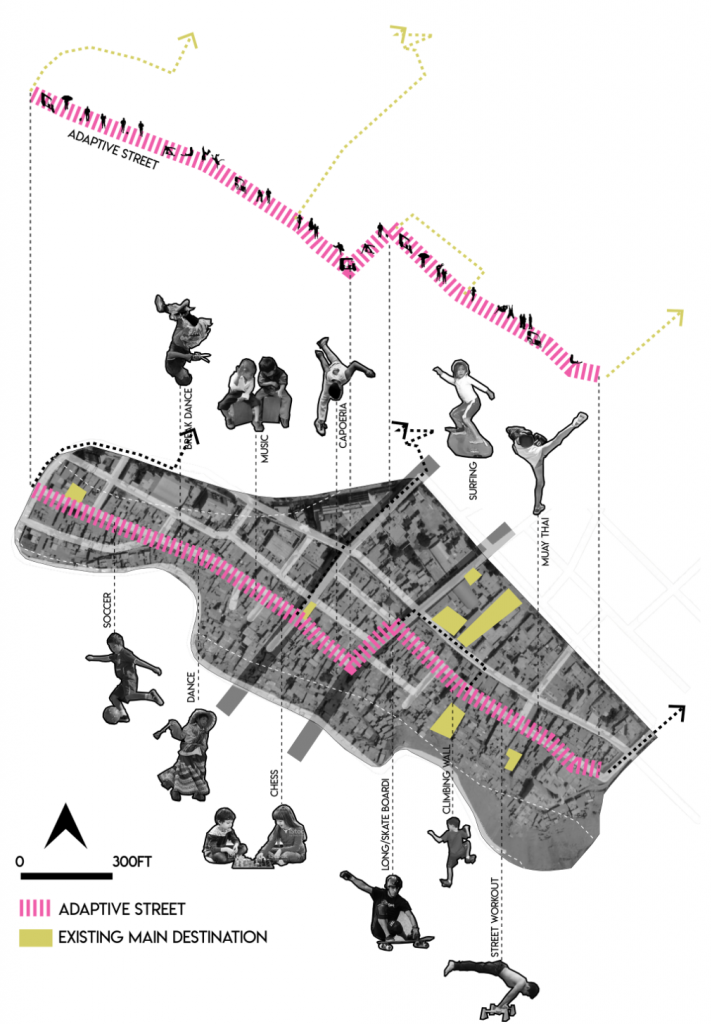
As cities diversity, densify, and globalize, it is increasingly important for urban design to respond to the changing needs of urban populations, especially vulnerable and underrepresented populations such as young people.
The Fall 2019 LA 402 Section A studio led by Dr. Shirtcliff will focus on design strategies for the inclusion of youth in design for climate change and resilience in New Orleans, LA.
Background
On May 25, 2018 Mayor LaToya Cantrell signed an executive order to create the Office of Youth and Families (OYF) to address these challenges. OYF was conceived to support systems-level change for vulnerable youth and families. https://nola.gov/office-of-youth-and-families/ The City of New Orleans is also in the process of completing a Parks Master Plan, Youth Master Plan, Public Library Master Plan, Hazard Mitigation Plan Update, Comprehensive Recovery Plan, and Sewerage and Water Board Master Plan. While this is still just the beginning, OYF has built tremendous momentum and has already teamed up with ARUP (see Cities Alive Brochure), placing design and planning at the forefront of addressing systems-level changes. Further, OYF has prioritized both top-down opportunities as well as pulling from the ground-up through multiple non-governmental organizations. Children and youth are now, more than ever, a top priority for New Orleans’ physical, social, and economic development.
Our Charge
As Fourth Year Landscape Architecture students, you’ve mastered the design process!
 However, for “A Child-Friendly City” we won’t have a site. How could there be a site for all of the youth living in New Orleans? Never mind the complexity of trying to transport all of the individuals who don’t have access to reliable, private or public transportation, we would be over-assuming that we could solve all of their problems with design. What role can design play? Beyond families, youth need: programs, recreation, education, and employment. Aside from the obvious activities, design doesn’t seem to fit in (Figure). Urban design challenges start with people. So, let’s reevaluate the design process to be about people instead of a bounded site.
However, for “A Child-Friendly City” we won’t have a site. How could there be a site for all of the youth living in New Orleans? Never mind the complexity of trying to transport all of the individuals who don’t have access to reliable, private or public transportation, we would be over-assuming that we could solve all of their problems with design. What role can design play? Beyond families, youth need: programs, recreation, education, and employment. Aside from the obvious activities, design doesn’t seem to fit in (Figure). Urban design challenges start with people. So, let’s reevaluate the design process to be about people instead of a bounded site.
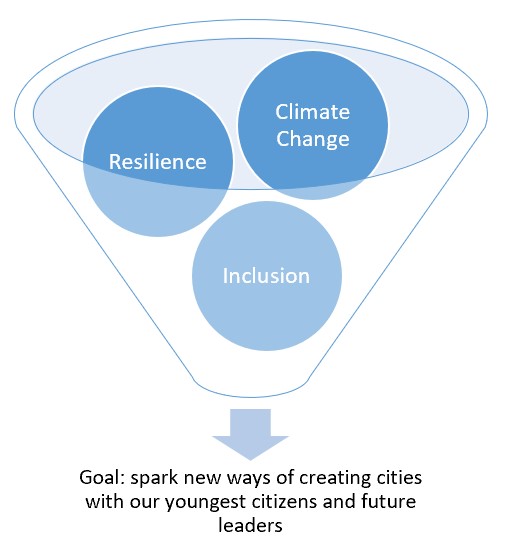
Our Goals
Goal One: Climate change is affecting coastal communities around the world. Our studio will prioritize identifying opportunities and barriers for youth in urban design for climate change.
Goal Two: Resilience in urban design is measured through people. Our studio will identify alternative infrastructures that address the unique needs of young people and families.
Goal Three: Inclusive design is only possible by successfully translating across barriers, eg. designers meet with clients and share ideas through representations like models and drawings. Our studio will generate new, creative communication assets to aid The City of New Orleans in making a Child-Friendly City.
Definition
The United Nations defines a child as any human being from the age of 0 through 17. Children have unique needs that change across this critical developmental period, from infants and toddlers, to teens and young adults. Our Child-Friendly City Urban Design Process considers the developmental period in its entirety.
Strategy 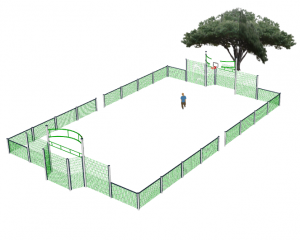
The urban design studio departs from site-based interventions to advance urban design as a continuous process or dialogue in the evolution of cities. The approach is more like having a conversation with the city rather than contributing another fragment to its well-worn pages. Like all stories, we will begin by framing the context of our studio within a broader global narrative (phase 1). Once the background for a child-friendly urban design process has been assembled, our characters will go off on their adventures. Phase 2 uses a path or story-line approach to capture the mundane details of the built environment that are infused in the daily life of children and youth living in New Orleans. Urban designers are adept in “seeing” cities as adults, so we create cities for adults, setting aside pockets for children and families. But our charge is to see a city from 95cm and above. To tell this story we will walk a line, what de Certeau referred to as “the pedestrian speech act.” The use of transects, a line repeatedly followed across the city, permits the studio to create novel storylines that we can place in the Child-Friendly City narrative. The end product will, literally, be a unique story-line that aims to bring each path into a conversation. At this point, our studio will travel to New Orleans to trace our story-lines in real time, engaging the sights, smells, sounds, and messy life of the urban environment. Each story will be shared with members of the City of New Orleans who would like to see this conversation evolve. Our studio will return to Ames, Iowa with new inspiration and a commitment to (Phase 3) creating and sharing a new, child-friendly story.
PHASE 1: Setting the Stage
- Expert Inquiry: Climate Change, Coastal Cities, and Foregrounding Youth in Design. How are coastal cities adapting infrastructures to respond to climate change? How are youth included? Individual effort.
- Precedent Study: Child-friendly Cities Tools and Techniques. Case studies and precedent work that builds towards our inclusion effort. Individual effort.
- Inclusion: Develop and design social media, blogs, etc. intended to improve translation. Connect with existing youth programs, places, and networks found in expert inquiry, precedent study, and in New Orleans. #neworleansyouth The online platform will be our primary means of generating new creative communication assets to share with the City of New Orleans. Class effort with individual assignments.
PHASE 2: Drawing the Line
- Mapping Transects: Past, Present, Future: Students in teams of 3 – 4 will draw a line across the city. The line will not be straight and must be completely accessible to a child walking. The line must cross: a residential area, elementary, middle, and high school, interstate, canal, low-point, high-point, urban center, and urban edge. The line will be studied at each of these key points and every 1/2 mile. Synthesize inquiry, precedents, and inclusion into maps that begin to model strengths, weaknesses, opportunities, and threats in New Orleans hard and soft infrastructure systems. This is where systemic change begins at the ground level.
- A Path to Change the Story Proposal: Teams. Before Intervention. Focus on route, path, and obstacles considering climate change, resilience, and youth inclusion. Primary outcome is a 2 minute and 30 second video packed with what you have learned from inquiry, precedents, mapping across your story line in New Orleans. You will collect narrative place (and maybe people) data while in New Orleans and include this into your prototype presentation Tuesday, October 8 with members of the City of New Orleans. The prototypes can be revised before the final phase 2 review on 10/18.
PHASE 3: Changing the Story
- Final Proposal: After intervention. Same route, path, and obstacles with resolved interventions. Primary output again is a three – four minute video that builds upon prior work to demonstrate opportunities for youth inclusion in the design of a child-friendly, resilient New Orleans. Students are encouraged to explore social media platforms and multiple modes of representation, communication, and storytelling to help change the story. For final reviews, students will share videos and print material at three scales: city, path, and pedestrian. All media will be available on the studio website. All work must be correctly labelled with student names to count towards final grades. Final student work will be available on website as a PDF. Any material can be electronically shared via Google Drive link. Send request to Ben Shirtcliff: bens@iastate.edu.
